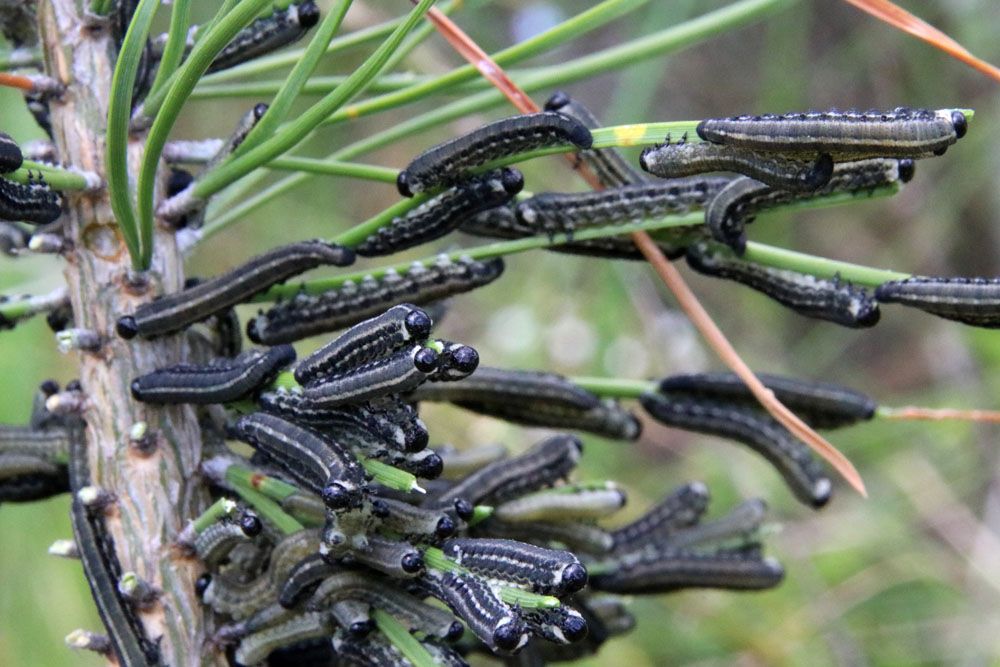
European Pine Sawfly – Neodiprion sertifer
European pine shoots Moth (Rhyacionia buoliana)
Latin Name: Rhyacionia buoliana
Common Name: European pine shoots Moth
Appearance:
- Adults are orange-red and have a wingspread of around 20 mm.
- The hind wings are dark grey, and the legs are white.
- The front wings are orange-red with many uneven, wavy silver stripes; the hind wings are dark grey, and the legs are white.
- Mature larvae are 12-15 mm long, with black head capsules and a pale yellowish-brown to brown coloration.
Host plants: Mugho pine, ponderosa pine, red pine, and Scots pine are the main host plants.
Territory:
It is native to North Africa, North Asia, and Europe and invasive in North America and South America.
Damages caused by European pine shoot Moth:
Many of the present shoots are lost during significant infestations of this insect, resulting in branch deformity and crooked, uneven development. As a result of the larvae eating and mining within buds and shoots, dying shoots are most visible in the spring. The damage is comparable to that caused by white pine weevils, but it may be more severe since lateral growth is also destroyed.
Damages caused by Leaf chewers:
Insect chewing damage to plants can take numerous forms. Foliage or flowers may vanish when certain insects eat them. Occasionally, the plant will appear ragged and, upon closer inspection, will reveal bitten edges or cores. Plants can be cut at the root and topple over, or twigs can be girdled and die as a result. Mining or boring is the process of causing harm to a plant through chewing. Only the upper or lower surfaces are sometimes destroyed, producing a brown, burned look or skeletonization (openings between the veins).
Life history and Habits:
This bug spends the winter as a larval in mined buds covered with resin-coated webs. During its development, one larva may infest numerous buds. Adult moths emerge in the spring and lay eggs on needles near leaf bases in the late spring. The larvae hatch and mine the needle, which becomes yellow or brown due to their work. The larvae shift buds around midsummer, mine both buds, and shoot below the bud. They spend the winter hiding within the diseased bud or shoot, emerging in the spring around June. The brown pupa emerging from the bud is evidence of emergence. Each year, a new generation is born.
